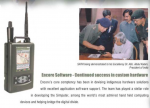Ordnance factories unable to meet army's ammunition demand: CAG
The CAG reports loss of Rs 62.10 crore on replacement of defective ammunition by ordinance factories.
Published: 06th December 2019 06:18 PM

For representational purposes (Photo: PTI)
NEW DELHI: The ordnance factories, which supply around 80 per cent of its total production items to Indian Army, are unable to meet significant quantity of army's demand for some principal ammunition thus adversely affecting their operational preparedness, exposes Comptroller And Auditor General (CAG) in its report on (Defence Services) Ordnance Factories presented in the Parliament on Friday.
The reports also point that factories achieved the production targets for only 49 per cent of items. It also highlights that the exports by ordinance factories have decreased by 39 per cent in 2017-18 over 2016-17.
The report clearly states, "A significant quantity of army's demand for some principal ammunition items remained outstanding as on March 31, 2018, thus adversely affecting their operational preparedness."
This report contains the results of audit of financial transactions of Ordnance Factories Organisation, under the Department of Defence Production of the Ministry of Defence.
The Ordnance Factories Board received budgetary grant of Rs 14,793 crore and Rs 804 crore in 2017-18 for its revenue expenditure and capital expenditure, respectively.
In 2017-18, it supplied materials of Rs 14,251 crore to its different indentors.
The reports also points the production capacity for empty and filled fuzes, an essential and critical part of ammunition to provide safe and reliable detonation at the desired time and place, was not adequate to meet army's requirement of ammunition.
Filling factories fill empty fuzes with explosives and assemble it with other components to form complete ammunition.
It also stated that there were mismatches in the availability of empty fuze from in-house production as well as from trade sources and their filling capacity in factories.
"Major shortfalls in production were noticed for eight types of empty fuzes mainly due to material constraints and quality problems. This resulted in slippages in issue of related ammunitions and spare filled fuzes to the users leading to critical deficiency of seven types of ammunition," the CAG stated.
Due to non-availability of spare fuzes, Army had stock of ammunitions worth Rs 403.27 crore lying in unusable condition, the report stated.
It also stated that inadequate quality checks both by the factories and quality assurance agencies in manufacturing led to significant quantum of return and rejection of empty fuzes and filled fuzes.
"A total 18 accidents occurred at the users' end relating to six ammunitions mainly because of fuze related defects and problems," the report stated.
Further the ordinance factories could not fulfil the army's requirement of electronic fuzes due to lack of infrastructure and capability.
Army had to order electronic fuzes Rs A1,511 crore during 2013-14 to 2017-18 from Electronic Corporation of India Ltd (ECIL) and Bharat Electronics Ltd (BEL).
The CAG also finds that functioning of e-procurement system, introduced in September 2011, Rules and Procedures stipulated in Procurement Manual of Ordnance Factories were not followed completely in its e-procurement system.
"Transparent bidding could not be ensured as instances of submission of multiple bids from a single machine and use of same Digital Signature Certificate by multiple users were noticed," it stated.
The report also stated that ordnance factories continued their payments and receipts of government money partially through manual method. This is in contravention to the directives of Controller General of Accounts in 2012 for making e-payment and of Controller General of Defence Accounts in 2016 for depositing government receipts into the government Account through e-challan.
The CAG reports loss of Rs 62.10 crore on replacement of defective ammunition by ordinance factories.
Army reported exudation of explosives from ammunition supplied in March, 2009 and March 2010 by Ordnance Factory Badmal within their shelf life.
This was on account of lower set point melting point on TNT than the specified range. Set point value of TNT was not tested at ordinance factories before filling in shells due to absence of such provision in the specification of Controllerate of Quality Assurance.
This led to a loss of Rs 62.10 crore on account of replacement of defective ammunition by the Ordnance Factory.
Ordnance factories unable to meet army's ammunition demand: CAG
The CAG reports loss of Rs 62.10 crore on replacement of defective ammunition by ordinance factories.
Published: 06th December 2019 06:18 PM

For representational purposes (Photo: PTI)
NEW DELHI: The ordnance factories, which supply around 80 per cent of its total production items to Indian Army, are unable to meet significant quantity of army's demand for some principal ammunition thus adversely affecting their operational preparedness, exposes Comptroller And Auditor General (CAG) in its report on (Defence Services) Ordnance Factories presented in the Parliament on Friday.
The reports also point that factories achieved the production targets for only 49 per cent of items. It also highlights that the exports by ordinance factories have decreased by 39 per cent in 2017-18 over 2016-17.
The report clearly states, "A significant quantity of army's demand for some principal ammunition items remained outstanding as on March 31, 2018, thus adversely affecting their operational preparedness."
This report contains the results of audit of financial transactions of Ordnance Factories Organisation, under the Department of Defence Production of the Ministry of Defence.
The Ordnance Factories Board received budgetary grant of Rs 14,793 crore and Rs 804 crore in 2017-18 for its revenue expenditure and capital expenditure, respectively.
In 2017-18, it supplied materials of Rs 14,251 crore to its different indentors.
The reports also points the production capacity for empty and filled fuzes, an essential and critical part of ammunition to provide safe and reliable detonation at the desired time and place, was not adequate to meet army's requirement of ammunition.
Filling factories fill empty fuzes with explosives and assemble it with other components to form complete ammunition.
It also stated that there were mismatches in the availability of empty fuze from in-house production as well as from trade sources and their filling capacity in factories.
"Major shortfalls in production were noticed for eight types of empty fuzes mainly due to material constraints and quality problems. This resulted in slippages in issue of related ammunitions and spare filled fuzes to the users leading to critical deficiency of seven types of ammunition," the CAG stated.
Due to non-availability of spare fuzes, Army had stock of ammunitions worth Rs 403.27 crore lying in unusable condition, the report stated.
It also stated that inadequate quality checks both by the factories and quality assurance agencies in manufacturing led to significant quantum of return and rejection of empty fuzes and filled fuzes.
"A total 18 accidents occurred at the users' end relating to six ammunitions mainly because of fuze related defects and problems," the report stated.
Further the ordinance factories could not fulfil the army's requirement of electronic fuzes due to lack of infrastructure and capability.
Army had to order electronic fuzes Rs A1,511 crore during 2013-14 to 2017-18 from Electronic Corporation of India Ltd (ECIL) and Bharat Electronics Ltd (BEL).
The CAG also finds that functioning of e-procurement system, introduced in September 2011, Rules and Procedures stipulated in Procurement Manual of Ordnance Factories were not followed completely in its e-procurement system.
"Transparent bidding could not be ensured as instances of submission of multiple bids from a single machine and use of same Digital Signature Certificate by multiple users were noticed," it stated.
The report also stated that ordnance factories continued their payments and receipts of government money partially through manual method. This is in contravention to the directives of Controller General of Accounts in 2012 for making e-payment and of Controller General of Defence Accounts in 2016 for depositing government receipts into the government Account through e-challan.
The CAG reports loss of Rs 62.10 crore on replacement of defective ammunition by ordinance factories.
Army reported exudation of explosives from ammunition supplied in March, 2009 and March 2010 by Ordnance Factory Badmal within their shelf life.
This was on account of lower set point melting point on TNT than the specified range. Set point value of TNT was not tested at ordinance factories before filling in shells due to absence of such provision in the specification of Controllerate of Quality Assurance.
This led to a loss of Rs 62.10 crore on account of replacement of defective ammunition by the Ordnance Factory.
Ordnance factories unable to meet army's ammunition demand: CAG















































